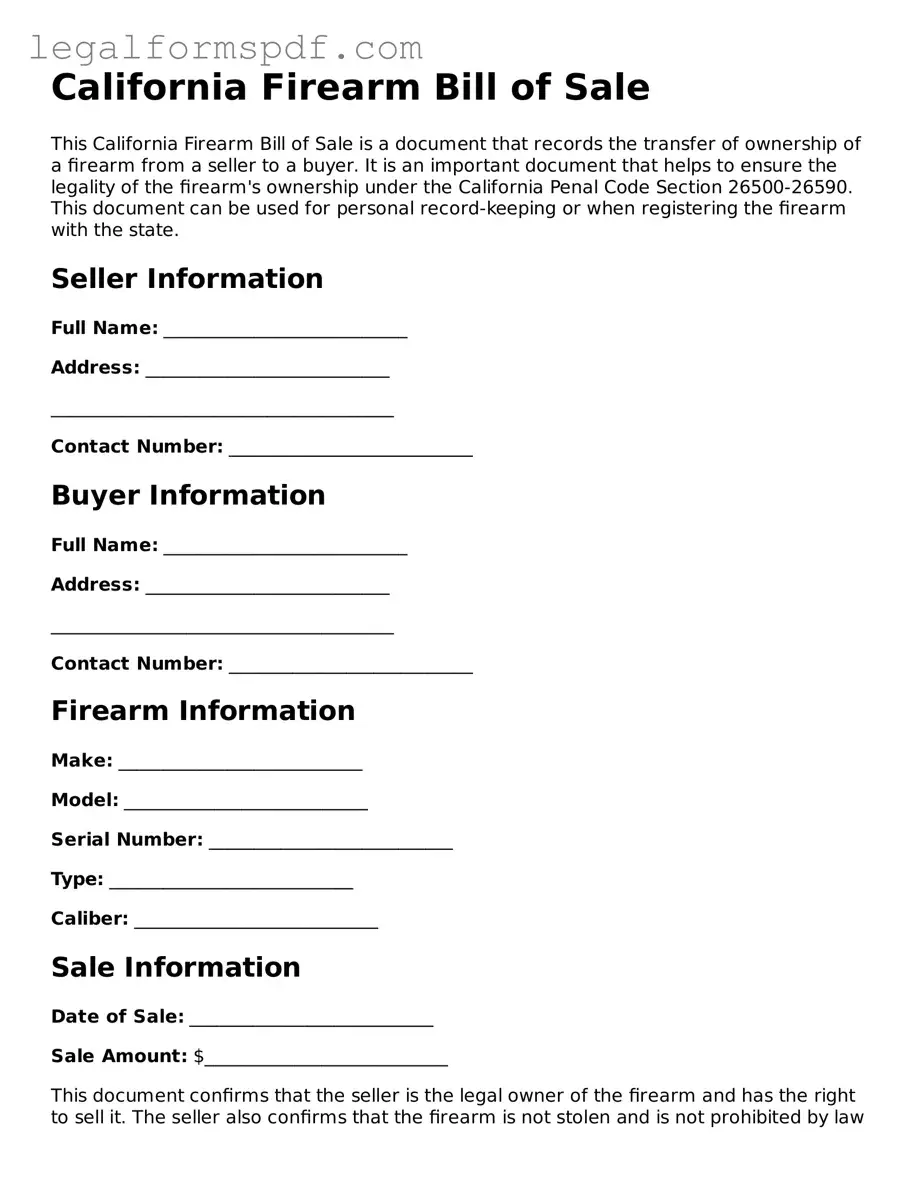California Firearm Bill of Sale
This California Firearm Bill of Sale is a document that records the transfer of ownership of a firearm from a seller to a buyer. It is an important document that helps to ensure the legality of the firearm's ownership under the California Penal Code Section 26500-26590. This document can be used for personal record-keeping or when registering the firearm with the state.
Seller Information
Full Name: ___________________________
Address: ___________________________
______________________________________
Contact Number: ___________________________
Buyer Information
Full Name: ___________________________
Address: ___________________________
______________________________________
Contact Number: ___________________________
Firearm Information
Make: ___________________________
Model: ___________________________
Serial Number: ___________________________
Type: ___________________________
Caliber: ___________________________
Sale Information
Date of Sale: ___________________________
Sale Amount: $___________________________
This document confirms that the seller is the legal owner of the firearm and has the right to sell it. The seller also confirms that the firearm is not stolen and is not prohibited by law from being owned. The buyer agrees to the terms of sale and acknowledges receipt of the firearm.
Signatures
Seller's Signature: ___________________________ Date: ___________________________
Buyer's Signature: ___________________________ Date: ___________________________
By signing below, both parties agree to the terms of this Bill of Sale and certify that the information provided is accurate and true.
Witness (If Applicable)
Signature: ___________________________ Date: ___________________________
Printed Name: ___________________________
Disclosure
This document does not guarantee that the buyer is legally able to possess firearms according to state or federal law. It is the buyer's responsibility to ensure they are not prohibited from firearm possession.
Additional Information
While this document assists in proving ownership transfer, it is recommended to check with local law enforcement or legal counsel for any additional steps required for firearm registration or ownership transfer in California.
